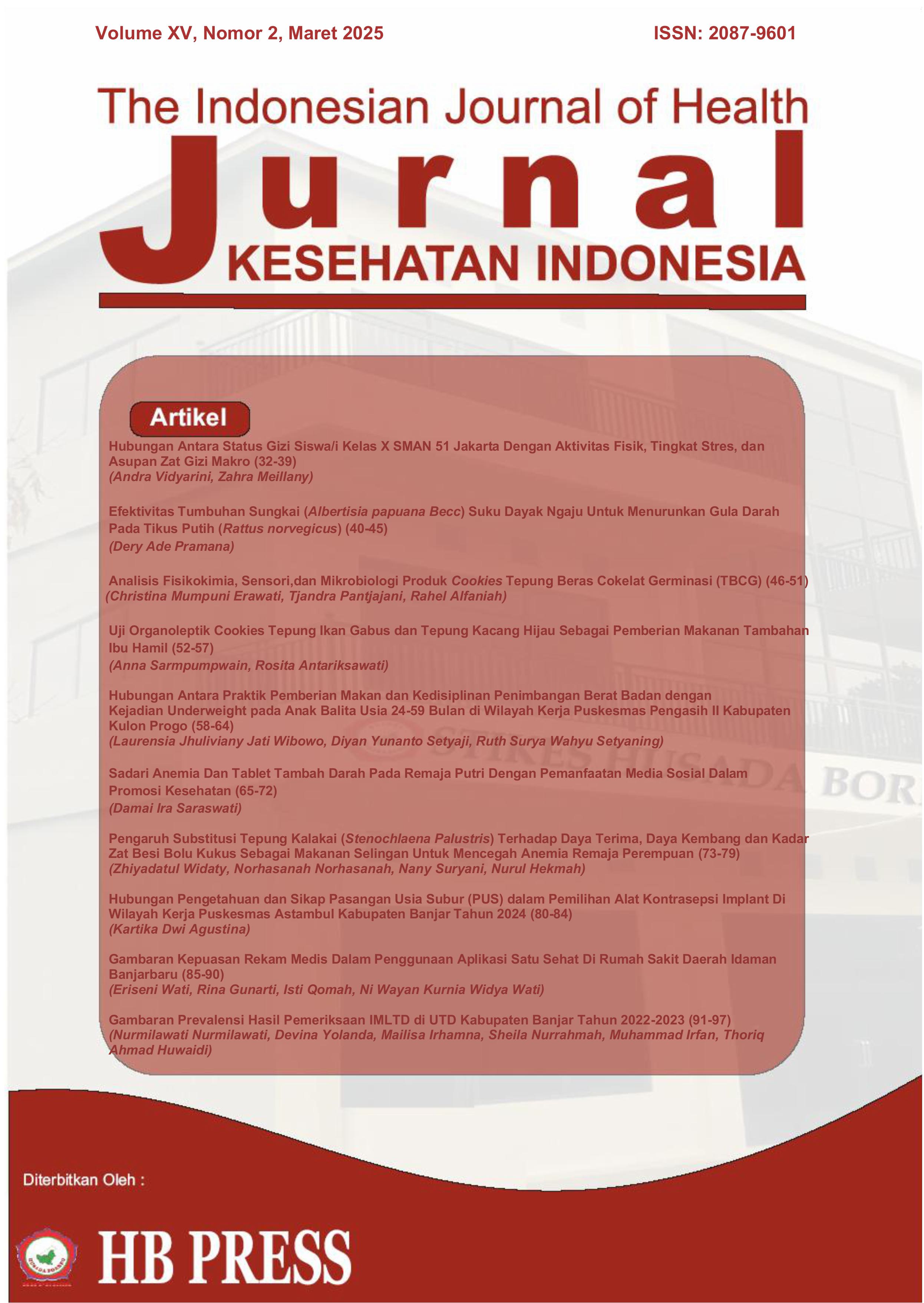Uji Organoleptik Cookies Tepung Ikan Gabus dan Tepung Kacang Hijau Sebagai Pemberian Makanan Tambahan Ibu Hamil dalam Upaya Pencegahan Stunting
Organoleptic Properties of Cookies from Snakehead Murrel and Mung Bean as Supplementary Food for Pregnant Mothers in Stunting Prevention
Abstract
Stunting or weight faltering is a chronic nutritional issue with increasing prevalence in developing countries, including Indonesia. UNICEF address one in three children experiences stunting, with slow weight gain, which can occur in utero and continue after birth, as the first common signal. The Indonesia Nutrition Status Survey (SSGI) 2022 exhibits an increase in the stunting rate, from 24.9% to 34.6%. To analyze the organoleptic properties of cookies from snakehead murrel (Ophiocephalus striatus) and mung bean (Vigna Radiata) flour as substitutes. ANOVA (Analysis of Variance) was undertaken. Data were analyzed using a Completely Randomized Design (CRD) method with a single factor, an organoleptic test with three treatments which were F1= 10 (g) + 5 (g), F2 = 30 (g)), and F3 = 50 (g) +5 (g), with two repetitions. ANOVA implied that the flavor, color, aroma, and texture indicated a p-value of 0.000 (p < 0.05), pointing out significant differences between treatments of cookies from snakehead murrel and mung bean flour as substitutes (F1, F2, and F3). Duncan’s test was then carried out to identify the differences. The test results showed that the flavors and aromas of F1, F2, and F3 differed significantly, while F1 and F2 were not significantly different in terms of colors and textures but significantly different with F3. Grounded on ANOVA and Duncan’s test, F1, F2, and F3 suggested significant differences in texture, aroma, and flavor.












